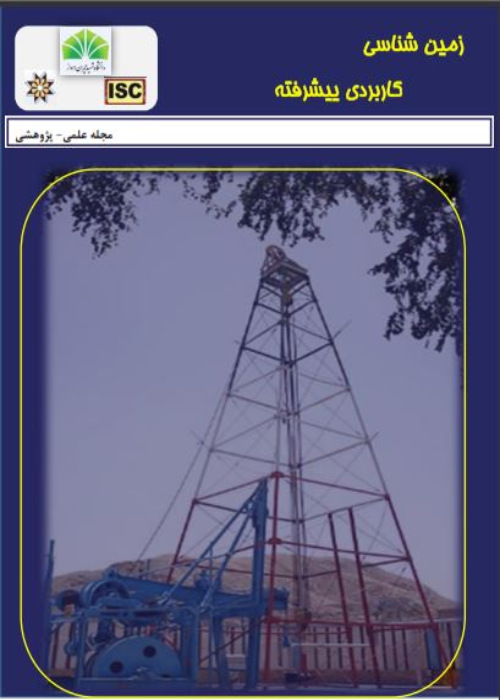Quality and Development of Dolomitization and its Role in Oil Production, Bengestan Reservoir of Ahvaz Oil Field
Carbonate reservoirs is a challenge for geologists comparing to sandstone reservoirs due to their variation. These reservoirs are characterized as a combination of limestone and dolomite such as the Bangestan reservoir in Ahvaz oil field located at Dezful embeyment (70 km length and 7 km width). The Bangestan reservoir is divided into 10 zones based on lithological and petrophysical properties. Dolomitized limestones are indicating a higher permeability than pure limestone formation and so can be considered as a potential location of hydrocarbon accumulation (Halley and Schmoker, 1983). Dolomitization is introduced as a main controlling agent (Tucker and Wright, 1991) and different models are cited for dolomitization process (Meyers et al., 1997). The process led to produce several complicated textures in limestone units (Gregg et al., 2001).
The present research work is an attempt to study dolomitized horizons in this field involving their identification, and distribution. Diagenetic processes such as dedolomitization and certification and their role in reservoir quality (Lucia, 1999) are also discussed.
Methodology
To determine of dolomite distribution and textures, 3240 thin sections of selected samples taken from 36 drilled wells were used. Dolomite and calcite were distinguished by thin sections staining with the help of red Alizarin (Meng et al., 2019). Limestone facies were determined using Dunham classification (Dunham, 1962). Borehole logs and petrophysical data were applied to interpret the role of dolomites in reservoir quality.
Thin sections petrographic study revealed a sequence of dolomitetion, dedolomitization and certification processes in pores (Fig. 1A, B) attributed to fluidal composition changes. The sequence is started by the formation of dolomite, and followed by dedolomitized crystals (Fig. 1C, D, E, F) and chert (Fig. 1A, B, D) precipitation. Dolomitization process was initiated from the edge of calcite crystals and progressed (Mehmood et al., 2018) (Fig. 1G). Dolomite crystals presence in stylolite (Fig. 1H) and adjacent area are indicating two stages of dolomitization process which is possibly related to hydrothermal fluids (Martin-Martin et al., 2017). The model is also supported by dolomite discrepancy, however, burial model is also a candidate for matrix dolomites due to released fluids by shale (Kazhdumi Formation) compaction (Mattes and Mountjoy, 1980). The presence of abundant stylolite associated with dolomite crystals supports the burial and hydrothermal models. Determined carbonate facies in 2120 m of carbonate column studied are wackestone-mudstone, wackestone-packstone and grainstone – packstone in a decreasing frequency order. Wackeston facies is a suitable unit for dolomitization (Martín-Martín et al., 2017) but the presence of super saturated Mg-fluid is necessary. Carbonate facies are varied from NW to SE of the field with involving of paleohigh (Esrafili-Dizaji et al., 2015). According to thin sections petrography, euhedral dolomite crystals frequency decreased from NW towards SE parts. This pattern is the result of combination two factors (A) carbonate facies, and (B) pore type. The facies are mostly grain supported in SE part while mud supported facies in NW part. Thin sections petrography indicated that porosity distribution in dolomitic units affected by facies changes, dolomite crystal forms and dedolomitization and certification diagenetic processes through the field. Well-formed crystals of dolomite is considered as a main factor of porosity increasing and improving reservoir quality. The plot is showing an excellent linear relation between horizontal and vertical permeability and total porosity due to well-formed crystals of dolomite. The study of petrophysical logs (neutron, gamma and density) showed that the porosity was increased by dolomitization process but dedolomitization and chertification decreases it.Figure 1. Selected core thin sections microphotographs indicating diagenetic processes in Ahvaz oil field, well#63: (A, B) pore filings by dolomite, calcite and chert (3518m depth); (C, D) localized replacement of euhedral dolomite crystals (3428m depth); (E ) dolomite and dedolomitized crystals (3425m depth); (F, G) partially dedolomitized dolomites (3517m depth; G-sample is from 3520 m depth in well #49) and (H) dolomite crystals and stylolite (3694m depth).
Evaluation of dolomitization process, in 36 wells in Ahvaz oil field indicated that euhedral dolomite crystals have been more developed in northwestern part than central and southeastern parts. Wackestone and packstone/ grainstone facies have the highest and lowest values of euhedral dolomite crystals, respectively. Iso-thickness and iso-porosity maps of dolomitized horizons indicated that the northwestern production zones are more affected by dolomitization process. In spite of euhedral dolomite in NW part, thin section petrography verified that dedolomitization process decreased the porosity in this part respect to central part of the field. The permeability values of the horizons containing euhedral dolomite crystals indicating higher values than the others. There is a very sharp linear relation between porosity and permeability distribution (high correlation coefficient values) in horizons with more than 25 % euhedral dolomite. The study of petrophysical logs also shows the porosity to be increased by dolomitization but decreases by dedolomitization and certification processes.
- حق عضویت دریافتی صرف حمایت از نشریات عضو و نگهداری، تکمیل و توسعه مگیران میشود.
- پرداخت حق اشتراک و دانلود مقالات اجازه بازنشر آن در سایر رسانههای چاپی و دیجیتال را به کاربر نمیدهد.


